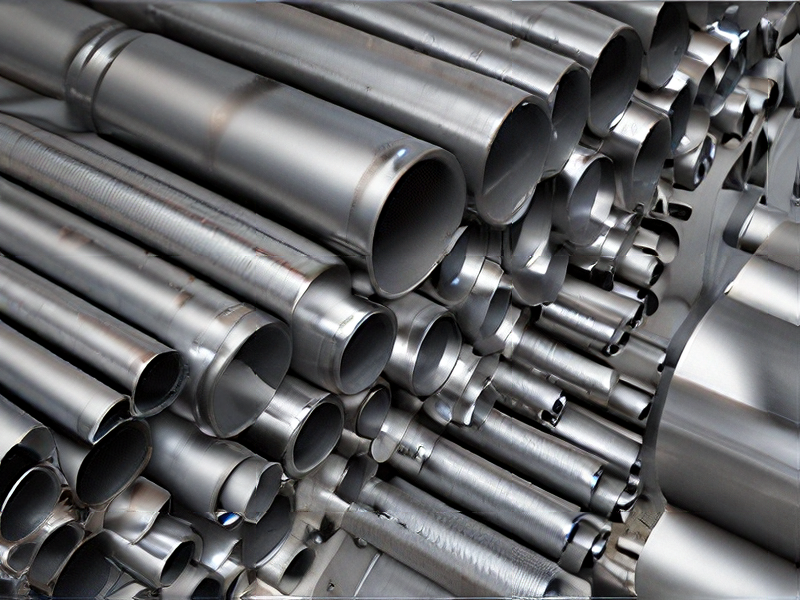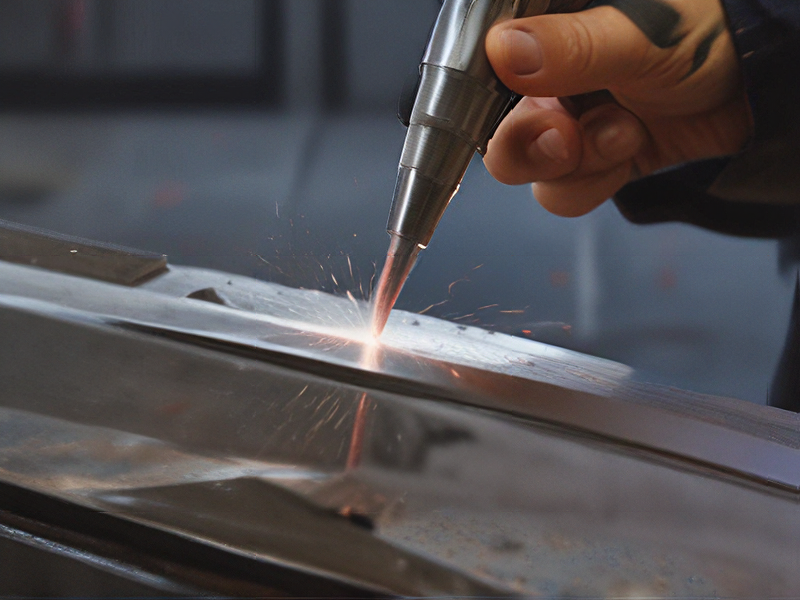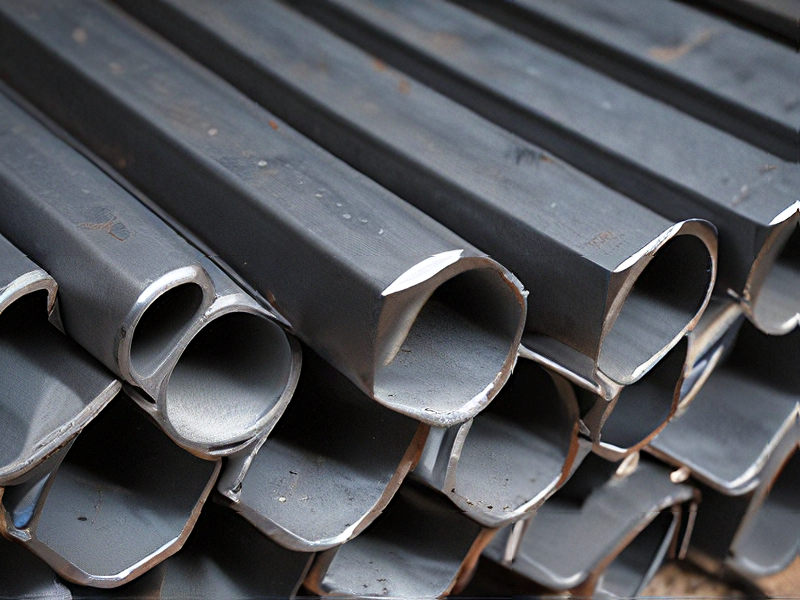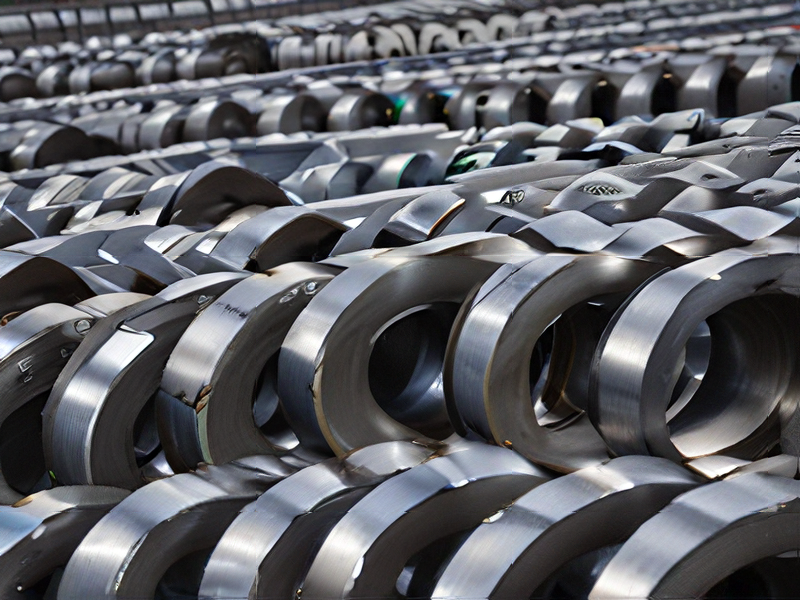Technology and Applications of steel material
Steel, an alloy primarily composed of iron and carbon, is renowned for its strength, durability, and versatility, making it indispensable in numerous industries.
Technology:
1. Production Methods:
– Blast Furnace-Basic Oxygen Furnace (BF-BOF): This traditional method produces high-quality steel from iron ore and coke.
– Electric Arc Furnace (EAF): Utilizes scrap steel, offering flexibility and lower CO2 emissions.
– Continuous Casting: Enhances efficiency by casting steel directly into semi-finished shapes.
2. Alloying and Treatment:
– Alloying Elements: Adding elements like chromium, nickel, and vanadium enhances properties like corrosion resistance and strength.
– Heat Treatment: Processes like annealing, quenching, and tempering tailor mechanical properties.
3. Advanced Manufacturing:
– 3D Printing: Enables intricate designs and rapid prototyping.
– Nano-steel: Incorporates nanotechnology to improve strength and wear resistance.
Applications:
1. Construction:
– Structural Steel: Used in skyscrapers, bridges, and residential buildings for its load-bearing capabilities.
– Reinforcing Bars (Rebars): Provide tensile strength in concrete structures.
2. Automotive:
– Body Panels and Chassis: Steel’s high strength-to-weight ratio enhances safety and fuel efficiency.
– Engine Components: High-temperature resistance ensures reliability.
3. Energy Sector:
– Oil and Gas: Steel pipelines and platforms withstand harsh environments.
– Renewable Energy: Used in wind turbine towers and frames.
4. Household Appliances:
– White Goods: Steel is fundamental in refrigerators, washing machines, and ovens for its durability and ease of cleaning.
5. Aerospace:
– Aircraft Landing Gear: Steel’s toughness handles extreme stresses.
Steel’s adaptability and performance make it a cornerstone of modern technology and infrastructure, driving innovation and economic growth across the globe.

Quality Testing Methods for steel material and how to control quality
Quality testing methods for steel materials typically involve several key approaches to ensure the material meets specified standards:
1. Chemical Composition Analysis: Utilizes methods like spectrometry to verify the elemental composition, ensuring it meets required alloying elements and impurity limits.
2. Mechanical Testing: Includes tests like tensile, hardness, impact, and fatigue tests to assess strength, toughness, and durability under various conditions.
3. Non-Destructive Testing (NDT): Techniques such as ultrasonic testing, radiographic testing, magnetic particle testing, and dye penetrant testing detect surface and internal defects without damaging the material.
4. Dimensional Inspection: Ensures the steel dimensions (thickness, width, length) conform to specifications using tools like calipers, micrometers, and coordinate measuring machines (CMM).
5. Microscopic Examination: Involves metallography to examine the microstructure of steel to verify grain size, inclusion content, and overall homogeneity.
To control quality effectively:
– Establish Standards: Define clear quality standards based on industry specifications (ASTM, ISO, etc.) and customer requirements.
– Supplier Qualification: Evaluate and select reliable suppliers based on their quality management systems, track record, and certifications (ISO 9001, etc.).
– Process Control: Implement process controls at every stage of manufacturing to minimize variations and ensure consistency.
– Training and Skills: Train personnel in testing methods, quality control procedures, and safety protocols to maintain high standards.
– Continuous Improvement: Regularly review and improve quality control processes through feedback, data analysis, and corrective actions to enhance product quality and reliability.
By employing these methods and practices, manufacturers can effectively ensure the quality of steel materials, meeting stringent industry and customer demands.

Tips for Procurement and Considerations when Purchasing from steel material
When procuring steel materials, several key considerations ensure optimal outcomes:
1. Specifications and Standards: Define the exact requirements in terms of grade, dimensions, strength, and finish. Different applications may require specific types of steel (e.g., stainless steel for corrosion resistance).
2. Supplier Evaluation: Assess suppliers based on reputation, reliability, quality certifications (e.g., ISO 9001), and their ability to meet deadlines. Request samples or visit facilities if possible.
3. Cost and Budget: Obtain competitive pricing but prioritize quality and reliability over cost alone. Consider total cost of ownership including transportation, storage, and potential maintenance.
4. Supply Chain and Logistics: Ensure suppliers can handle logistics efficiently. Factors such as lead times, shipping methods, and inventory management capabilities are crucial.
5. Quality Assurance: Require documentation like material test reports (MTRs) to verify compliance with specifications. Conduct inspections upon delivery to ensure consistency and quality.
6. Sustainability and Compliance: Verify suppliers’ adherence to environmental regulations and ethical sourcing practices. Opt for materials with recycled content if feasible.
7. Risk Management: Identify potential risks such as supply chain disruptions or material shortages. Have contingency plans and diversify suppliers where possible.
8. Long-Term Relationship: Foster partnerships with reliable suppliers to streamline future procurements and negotiate favorable terms.
By addressing these factors systematically, procurement professionals can ensure the acquisition of high-quality steel materials that meet project requirements efficiently and effectively.

FAQs on Sourcing and Manufacturing from steel material in China
FAQs on Sourcing and Manufacturing Steel Materials in China
1. Why source steel materials from China?
China is the world’s largest steel producer, offering competitive prices, diverse product ranges, and advanced manufacturing technologies. This makes it an attractive option for global buyers.
2. What types of steel products are available in China?
China manufactures various steel products, including carbon steel, stainless steel, alloy steel, and specialty steel. Products range from sheets, plates, and coils to pipes, tubes, bars, and structural components.
3. How to find reliable suppliers?
Use online directories, trade shows, and industry networks. Platforms like Alibaba, Made-in-China, and Global Sources provide access to supplier databases. Always verify suppliers’ credentials and conduct factory audits.
4. What are the quality standards?
Chinese steel products often meet international standards such as ASTM, ISO, and EN. Ensure suppliers provide relevant certifications and test reports to confirm compliance with these standards.
5. How to ensure product quality?
Implement a robust quality control process, including pre-shipment inspections and third-party audits. Employing a local sourcing agent can also help manage quality assurance effectively.
6. What are the common payment terms?
Typical payment terms include Telegraphic Transfer (T/T), Letter of Credit (L/C), and sometimes Open Account (O/A) for established relationships. Negotiate terms that offer a balance of security and flexibility.
7. What about lead times and logistics?
Lead times vary by product type and order size, typically ranging from a few weeks to several months. Utilize efficient logistics partners to manage shipping, customs clearance, and delivery schedules.
8. Are there any import duties or tariffs?
Import duties and tariffs depend on the destination country and trade agreements. Check local regulations to understand applicable duties and ensure compliance.
9. How to handle communication and language barriers?
Many Chinese suppliers have English-speaking staff. However, hiring a bilingual sourcing agent or using translation services can facilitate smoother communication and negotiation.
10. What are the risks and how to mitigate them?
Common risks include quality issues, delays, and supplier reliability. Mitigate these by conducting thorough due diligence, establishing clear contracts, and maintaining regular communication with suppliers.
By following these guidelines, businesses can effectively source and manufacture steel materials from China, leveraging the country’s strengths while managing potential challenges.

